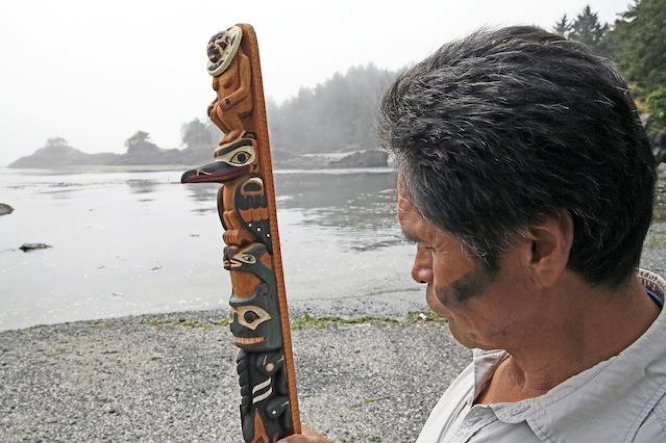First published on 09/05/2013, and last updated on 03/05/2018
By: Eli Enns, ICCA consortium Regional Coordinator for North America & University of Victoria POLIS Project on Ecological Governance Affiliate
While our planet experiences an extinction event on a historic scale we are also losing indigenous languages at an equally alarming rate. Is there a connection? Cultural-Biological diversity refers to a corresponding diversity in cultures (values, beliefs, languages) and life (from micro organisms to apex predators such as wolves and humans). A culture that is rooted for many generations in a given place, will evolve tailored knowledge of the life forms there, which will improve its Resiliency. Many indigenous cultures’ ways of organizing societal relationships to environment, have built in them ideas of responsible ecosystem stewardship, or Natural Economy, including almost universally an emphasis on Reciprocity.
Reciprocity, the idea of exchange and mutual benefit, is key to maintaining a healthy relationship between a society and an environment, and can be thought of as a fail safe rule for maintaining cultural and biological diversity. It connects intangible understanding of relationship to environment, with actions and tangible results in biological diversity and ecosystem health. Although both human social systems and ecosystems are complex apart from one another, reciprocity offers a simple rule of thumb to be sure that each can sustain and maintain resilience.
To illustrate reciprocity in action on a micro scale, take the following personal experience from my natural education in the Tribal Parks of Clayoquot Sound on the West Coast of Vancouver Island, British Columbia, Canada. Years ago, my elder relative took me fishing in the early summer. After several hours off shore and many fish caught, we headed in land. Rather than heading straight to dock in the village, he pulled his boat up along side “Sea Gull Rocks” just off shore and asked me to take a bucket and go to collect some Sea Gull eggs.
Growing up in an urban centre, this was a completely new experience for me, and at first, an unsettling one. The birds were obviously alarmed at my presence, and I could feel their anxiety. After a brief and unsuccessful search of the lower bank of the rocky islet, I returned to report back to my elder. What I saw then both put me at ease and brought home a teaching that had previously been given to me verbally. My relative was gutting the fish and departing the innards onto the lowest rocks for the Sea Gulls and the other creatures to eat in exchange for what we intended to take. He instructed me to climb up to the higher clefts, where I was indeed successful in finding several eggs. Rather than feeling like a thief, because of the exchange of energy that we offered, I felt a sense of reciprocity.
How does this level of reciprocity ensure cultural and biological diversity? Having a diverse way of meeting your energy needs helps to ensure that no one resource is relied upon to the point of exhaustion. Reciprocity further ensures against exhaustion of resources by going one step further and replenishing the resource on a case to case basis. In this way, the idea of reciprocity becomes a balancing force in cultural-biological diversity.
